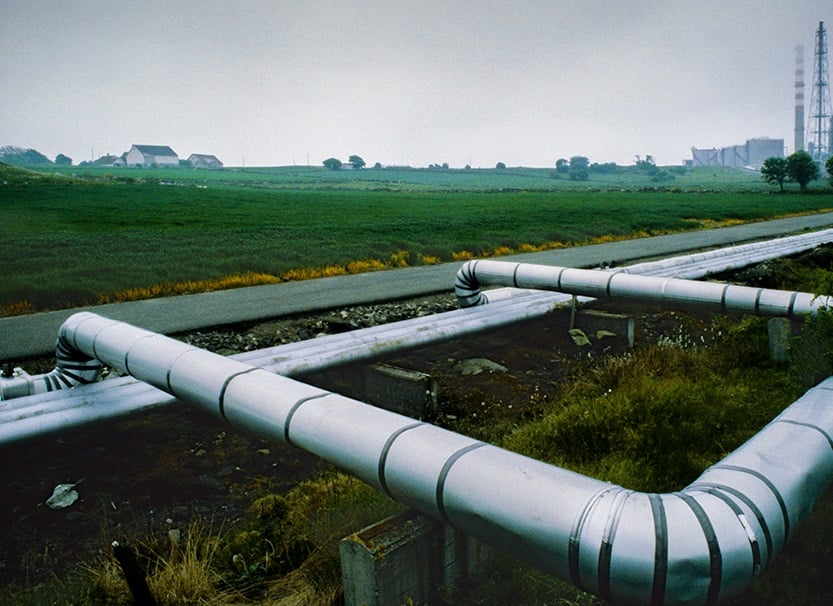EPA, Departments of Interior and Energy Announce New Coal-Friendly Policy Initiatives
On September 29, 2025, the Trump Administration unveiled a sweeping set of policy initiatives aimed at revitalizing the U.S. coal sector that spans multiple federal agencies and includes measures such as increased funding and financial incentives, relief from environmental regulatory requirements, and increased access to public lands. In the unveiling, the Administration emphasized the importance of American “energy dominance” and the increased demand for electricity to power artificial intelligence (AI) in order to ensure that the United States wins “the AI arms race” — two themes commonly highlighted by the Administration and its top officials.

EPA Proposes Revisions to TSCA Risk Evaluation Framework for Existing Chemicals
On Tuesday, September 23, 2025, the U.S. Environmental Protection Agency (EPA) published a proposed rule to revise its procedural framework for conducting risk evaluations for chemicals already in commerce under the Toxic Substances Control Act (TSCA) (Proposed Framework Rule). The purpose of risk evaluation is to determine whether an existing chemical substance presents an unreasonable risk to health or the environment, under the conditions of use. Risk evaluation is the second step in EPA’s existing chemical process under TSCA, before EPA develops and proposes a rule to manage any such unreasonable risks.
EPA Proposes Overhaul of Greenhouse Gas Reporting Program
On September 16, 2025, the U.S. Environmental Protection Agency (EPA) published a proposed rule that would fundamentally reshape the federal Greenhouse Gas Reporting Program (GHGRP). 90 Fed. Reg. 44591 (Sept. 16, 2025). If finalized, this action would mark a further shift in federal greenhouse gas (GHG) policy and advance the administration’s broader deregulatory agenda.
Trump EPA Releases First Regulatory Agenda of Second Term – Key Takeaways and Timelines
The Trump Administration’s Spring 2025 Unified Agenda underscores the EPA’s central role in reshaping federal regulations. From PFAS standards to greenhouse gas rules and permitting reforms, the agenda highlights rollbacks of climate-related measures while introducing new compliance timelines. Companies should prepare now to engage on rules that will directly impact operations in energy, manufacturing, and beyond.
D.C. Circuit Upholds U.S. EPA’s HFC Cap-and-Trade Program Under AIM Act
On August 1, 2025, the U.S. Court of Appeals for the D.C. Circuit upheld the U.S. Environmental Protection Agency’s (EPA) authority under the American Innovation and Manufacturing (AIM) Act to phase down hydrofluorocarbons (HFCs) through a cap-and-trade program. In IGas Holdings, Inc. v. EPA, No. 23-1261, a unanimous panel rejected constitutional and administrative law challenges from refrigerant industry members, finding that the AIM Act provides a clear “intelligible principle” to guide EPA’s allowance allocation. The Court also held that EPA’s decision to exclude 2020 market data from its allocation methodology was not arbitrary and capricious.
U.S. EPA Eliminates Key Scope 3 Role, Leaving Gap Ahead of SB 253 Compliance
On July 28, 2025, the U.S. Environmental Protection Agency (EPA) eliminated the positions and unit responsible for maintaining the Extended Input-Output (EEIO) model, a key federal tool used to calculate Scope 3 greenhouse gas (GHG) emissions. The move signals a likely end to federal support for EEIO emissions factors, presenting challenges for companies preparing to comply with California’s landmark climate disclosure law, SB 253 (as amended by SB 219). As federal involvement recedes, the private sector and California regulators may fill the gap, introducing uncertainty about how Scope 3 emissions will be quantified going forward.

Agencies Collectively Move to Overhaul Environmental Review Regulations
On July 3, 2025, numerous federal agencies initiated an effort to revise the manner in which they comply with the National Environmental Policy Act (NEPA). NEPA, a cornerstone of environmental governance and project development in the U.S., has historically been implemented through regulations from the Council on Environmental Quality (CEQ). The DC Circuit questioned the legality of those regulations, as well as CEQ’s authority to implement them. And at the direction of President Trump’s February 25, 2025 Executive Order 14154 — “Unleashing American Energy” — CEQ rescinded its NEPA implementing regulations. In place, CEQ provided guidance for agencies that instructed them to update their NEPA procedures by February 2026 in a manner consistent with recent statutory amendments that prioritizes “efficiency and certainty over any other policy objectives.” Today, we are getting our first glimpse into what that process will look like.
EPA Updates Clean Air Act Standards Applicable to Small Waste Incinerators
On June 30, 2025, the U.S. Environmental Protection Agency (EPA) finalized updates to its New Source Performance Standards (NSPS) and Emission Guidelines for Other Solid Waste Incineration (OSWI) units under the Clean Air Act (CAA). These units — combustion systems that incinerate solid waste from commercial or institutional sources not otherwise regulated under specific incinerator categories — include very small municipal waste combustors and institutional incinerators. The final rule includes applicability-related and definitional changes expanding the class of incinerators subject to NSPS, revises the OSWI subcategories and tightens emission limits for key pollutants. It also adopts changes to startup, shutdown, and malfunction (SSM), and expands testing, monitoring, reporting, and recordkeeping requirements that will affect both existing and new OSWI units.

Supreme Court Issues Split Rulings on Clean Air Act Venue Disputes
On June 18, 2025, the U.S. Supreme Court issued decisions in two significant Clean Air Act cases — EPA v. Calumet Shreveport Refining and Oklahoma v. EPA — clarifying the appropriate venue for legal challenges to certain final EPA actions. In Calumet, the Court held that EPA’s universal denials of small-refinery-exemption (SRE) petitions under the Renewable Fuel Standard program were “based on a determination of nationwide scope or effect,” and thus challenges may only be brought in the D.C. Circuit Court of Appeals. By contrast, the Court in Oklahoma held that challenges to EPA’s disapproval of State Implementation Plans (SIPs) belong in the applicable regional circuit courts because the agency’s determinations were based on facts and rationales unique to each state. Although some gray areas remain, the twin decisions put several long-standing venue issues to rest and should encourage quicker resolution of Clean Air Act regulatory challenges.
EPA Proposes to Rescind Two Biden-EPA Fossil Fuel-Fired Power Plant Rules
On June 11, the EPA proposed two Clean Air Act (CAA) rules that would affect fossil-fuel fired electric generating units (EGUs). One rule would repeal greenhouse gas (GHG) standards under Section 111 and the second would repeal the 2024 EPA amendments to the mercury and air toxics (MATS) standards. The proposed rules are a part of the current administration’s stated goal to promote U.S. energy by reducing regulation of the power sector. The EPA estimates that, together, the two rules will save more than $1.3 billion in regulatory costs per year. Here are five key takeaways from these proposals.


